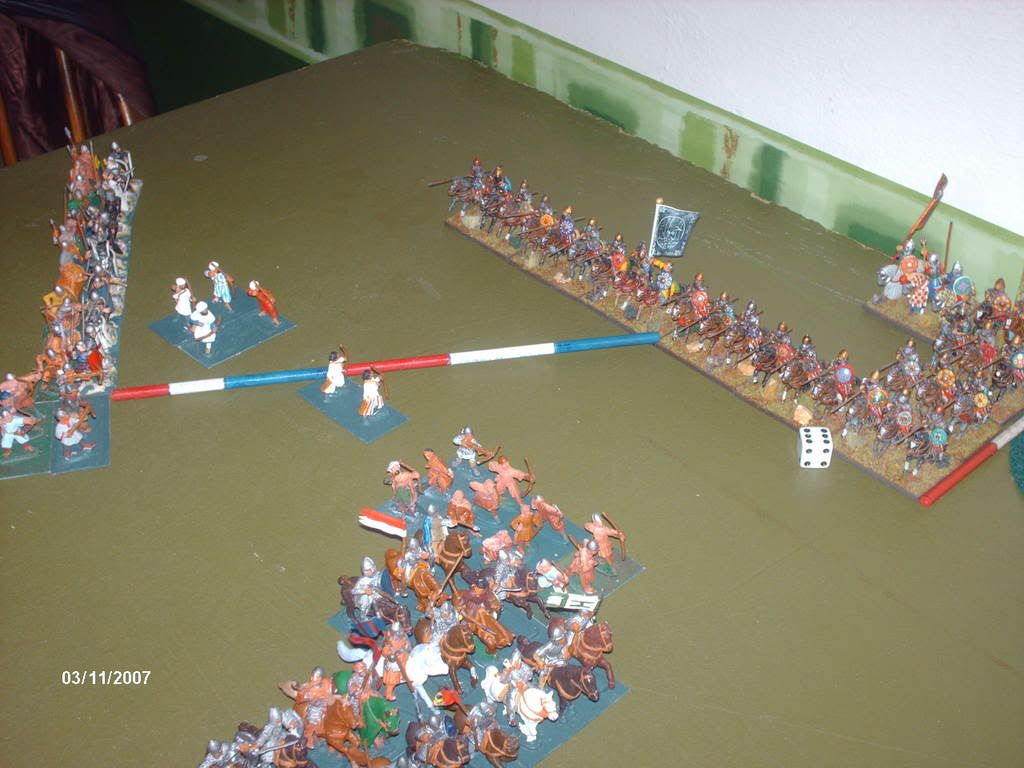Having discussed this recently with Phil (at Slimbridge) I do not believe the grey element can march into the rear as there are 2 elements that it will not contact within 400 paces
In essence you must contact
all elements within 400p with the march move (other than LH or Ps) - this includes front ranks of 2 deep or more formations
You will find that marching into flank or rear is thus a rare occurence
Below is the situation Phil "ruled" on - Our Ghaznavid Ghulams (the end couple where the 6 on the die is) could not march into the flank of the archers (Bw) due to the mass of Norman Knights within 400 paces even though their flank was exposed
The others could not march owing to the presence of the Norman Bw&Sp within 400paces - as illustrated by the coloured stick (or the Norman Knights or foot)

Regards
David Mather